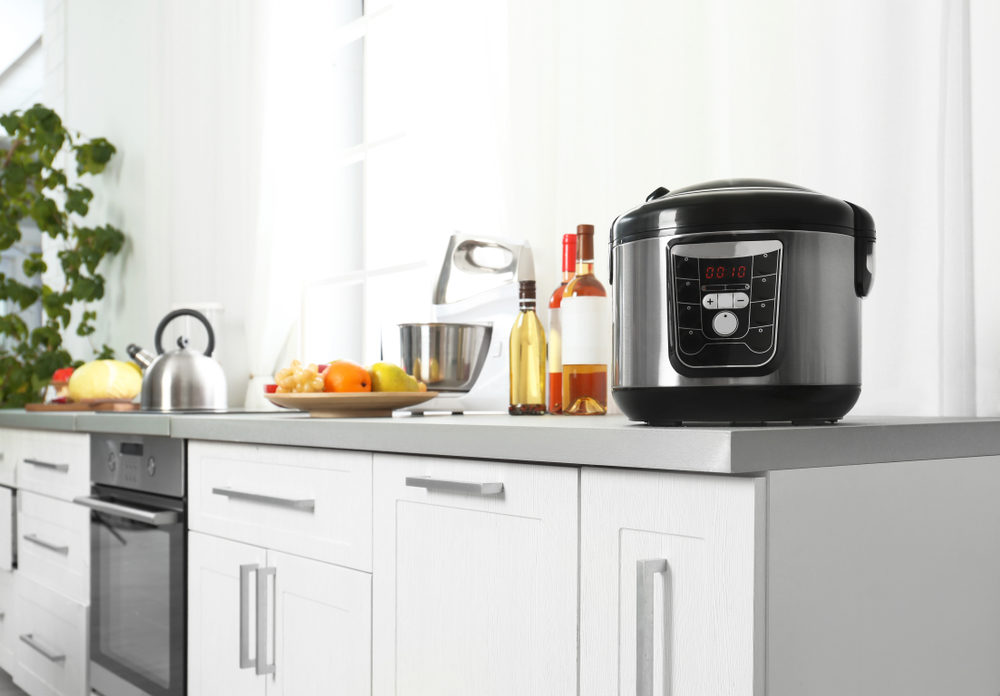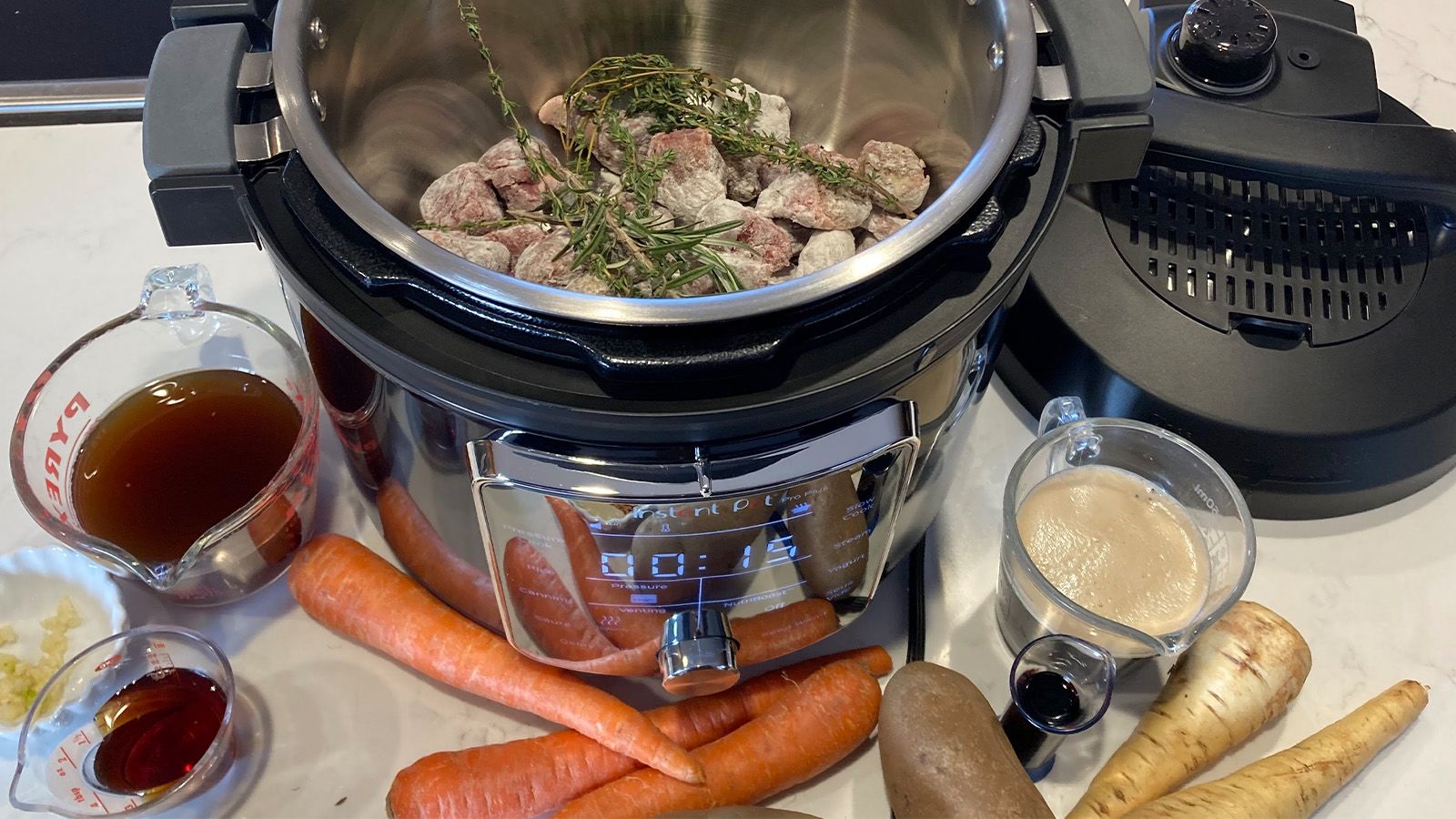Mastering the Art: How to Cook Rice in an Aroma Pressure Cooker
Written By James Morgan
Cooking rice perfectly has been a culinary challenge for many home cooks. However, with the advent of advanced kitchen gadgets, this task has become more manageable and foolproof. One such incredible gadget is the Aroma Pressure Cooker. In this article, we'll delve into how to cook rice in an Aroma Pressure Cooker. Not only will we cover the step-by-step process, but we'll also provide valuable tips and tricks to elevate your rice-cooking game. Whether you're a novice in the kitchen or a seasoned chef, this comprehensive guide is designed to help you master the art of cooking rice in an Aroma Pressure Cooker.

Why Choose an Aroma Pressure Cooker?
The Aroma Pressure Cooker is a multifunctional kitchen appliance that simplifies cooking. It combines the features of a traditional rice cooker with the advanced functionality of a modern pressure cooker. This means you can cook a variety of dishes, not just rice, with ease and precision. The pressure cooking technology ensures that your rice is cooked evenly and quickly, saving you time and energy. Additionally, the Aroma Pressure Cooker boasts user-friendly controls, a durable build, and a variety of cooking settings, making it a versatile addition to any kitchen.
Essential Ingredients and Equipment
- 1 cup of rice (white or brown)
- 1.5 to 2 cups of water (adjust based on rice type)
- 1 tablespoon of salt (optional)
- Aroma Pressure Cooker - pressure cooker
- Measuring cups and spoons
- Fine-mesh strainer or sieve
- Knife - knife
- Cutting board - cutting board

Step-by-Step Guide to Cooking Rice in Aroma Pressure Cooker
Step 1: Rinse the Rice
Start by measuring the desired amount of rice using a measuring cup. For our example, we'll use 1 cup of white rice. Place the rice in a fine-mesh strainer or sieve and rinse it under cold running water. Rinsing rice removes excess starch, which can cause the rice to become sticky or gummy. For best results, rinse the rice until the water runs clear.
Step 2: Add Water and Rice to the Pressure Cooker
Once the rice is rinsed, transfer it to the Aroma Pressure Cooker. Add 1.5 to 2 cups of water to the pot for every cup of rice. The water-to-rice ratio may vary slightly depending on the type of rice you're using. For instance, white rice typically requires less water than brown rice. If you prefer slightly firmer rice, use the lower end of the water ratio; for softer rice, use the higher end. Optionally, add a tablespoon of salt to enhance the flavor of the rice. Stir the rice and water lightly to ensure even distribution.
Step 3: Set the Cooking Parameters
Close the lid of the Aroma Pressure Cooker securely. Depending on your model, select the appropriate cooking setting for rice. Many Aroma Pressure Cookers have a dedicated 'Rice' or 'White Rice' setting. If your model doesn't have this specific setting, choose the 'Pressure Cooker' or 'Manual' setting. Set the cooking time based on the type of rice you're using. For white rice, a cooking time of 8 to 10 minutes is usually sufficient. Brown rice may require 20 to 22 minutes. Ensure the pressure valve is set to the 'Sealing' position.
Step 4: Cook the Rice
Once you have set the cooking parameters, start the cooking process by pressing the 'Start' or 'Cook' button. The Aroma Pressure Cooker will begin building up pressure. Once it reaches the desired pressure, it will start the countdown timer for the cooking duration. During this time, avoid opening the lid or tampering with the cooker. Allow the pressure cooker to do its job and cook the rice evenly. The built-in sensors and timers ensure that the rice is cooked to perfection every time. It's essential to follow the specified cooking times to avoid overcooking or undercooking the rice.
Step 5: Release the Pressure
After the cooking time is up, the Aroma Pressure Cooker will beep to indicate that the rice is ready. Before opening the lid, it's crucial to release the pressure safely. There are two methods to release the pressure: the natural release and the quick release. The natural release method involves letting the pressure drop naturally, which can take 10 to 15 minutes. This method is ideal for fluffy, well-cooked rice. The quick release method involves manually turning the pressure valve to the 'Venting' position. Be cautious while using the quick release method, as hot steam will escape rapidly. Use a spoon or a kitchen cloth to avoid burns. Once all the pressure is released, carefully open the lid.
Step 6: Fluff and Serve
With the lid open, use a fork or a rice paddle to gently fluff the rice. This helps to separate the grains and enhance the texture of the rice. The rice is now ready to be served! Whether you're preparing a side dish, a main course, or a base for a stir-fry or curry, perfectly cooked rice can elevate any meal. Transfer the fluffed rice to a serving bowl or plate and enjoy. For added flavor, you can drizzle a bit of olive oil or melt some butter over the rice before serving.

Tips and Tricks for Perfect Rice
How to cook rice in an Aroma Pressure Cooker may sound straightforward, but achieving the perfect texture requires a few insider tips and tricks. Firstly, always measure the rice and water accurately. Using too much or too little water can affect the texture of the rice. Additionally, consider soaking the rice for 20 to 30 minutes before cooking. Soaking helps to hydrate the rice grains, resulting in a softer, more evenly cooked end product. Experimenting with different types of rice, such as jasmine, basmati, or sushi rice, can introduce new flavors and textures to your dishes. Adjust the cooking time and water ratio according to the specific type of rice you're using.
Cleaning and Maintenance
Proper cleaning and maintenance of your Aroma Pressure Cooker are essential to ensuring its longevity and optimal performance. After each use, allow the cooker to cool down before cleaning. Remove the inner pot and any detachable parts and wash them thoroughly with warm, soapy water. Avoid using abrasive sponges or harsh chemicals, as they can damage the non-stick coating and other components. For stubborn food residues, soak the pot in warm water before scrubbing. Additionally, periodically check the pressure valve and gasket for any clogs or wear and tear. Clean these parts gently to maintain their functionality. Proper storage is also crucial. Store your pressure cooker in a dry, ventilated area to prevent rust and damage. For more kitchen tips, you may find these [essential grilling tools](https://www.grilling4all.com/blogs/recipes/null) and [how to cook hard-boiled eggs](https://www.grilling4all.com/blogs/recipes/how-to-cook-hard-boiled-eggs-in-a-rice-cooker) guides useful. A detailed cleaning guide is available at [cookware cleaning](https://www.amazon.com) - cleaner and [cutting board oil](https://www.amazon.com) - oil.
For more diverse instant pot recipes, visit [this recipe collection](https://www.delish.com/cooking/recipe-ideas/g3951/instant-pot-recipes/) - instant pot recipes.
As an Amazon Associate, I earn from qualifying purchases.
As an Amazon Associate, I earn from qualifying purchases.



